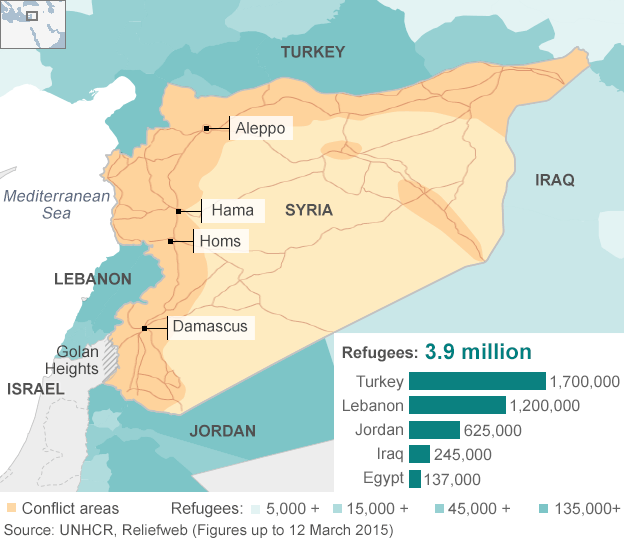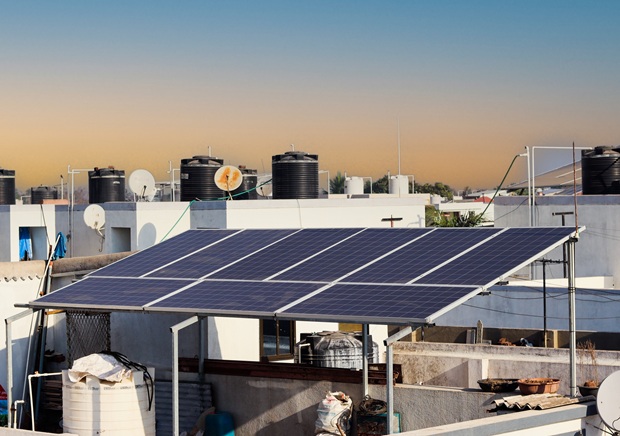- Courses
- GS Full Course 1 Year
- GS Full Course 2 Year
- GS Full Course 3 Year
- GS Full Course Till Selection
- Online Program
- GS Recorded Course
- NCERT (Recorded 500+ Hours)
- Polity Recorded Course
- Geography Recorded Course
- Economy Recorded Course
- AMAC Recorded Course
- Modern India, Post Independence & World History
- Environment Recoded Course
- Governance Recoded Course
- Science & Tech. Recoded Course
- International Relations and Internal Security Recorded Course
- Disaster Management Module Course
- Ethics Recoded Course
- Essay Recoded Course
- Current Affairs Recoded Course
- CSAT
- 5 LAYERED ARJUNA Mentorship
- Public Administration Optional
- ABOUT US
- OUR TOPPERS
- TEST SERIES
- FREE STUDY MATERIAL
- VIDEOS
- CONTACT US
The Fall of Bashar al-Assad in Syria
The Fall of Bashar al-Assad in Syria
09-12-2024
- On 8th December 2024, Opposition forces announced that Syria was now free from the rule of President Bashar al-Assad.
- After over 53 years of rule by the Assad family, the government in Syria collapsed.
- Rebel fighters took control of Damascus, the capital. Reports suggest that Bashar al-Assad fled the city.
- Context: This marks a major turning point in Syria’s long and violent civil war, which started in 2011.
- Assad's rule, which began with his father Hafez al-Assad, had weakened in recent years due to both local unrest and outside pressure.
Background: The Assad Family and Bashar al-Assad’s Rise to Power
1. Hafez al-Assad’s Rule (1970-2000)
- 1970: Hafez al-Assad, Bashar’s father, took power in Syria after a military coup. Syria at the time was unstable, with many changes in leadership.
- Sectarian Politics: Hafez was from the Alawite sect, a small group within Shia Islam, while most Syrians were Sunni Muslims.
- Despite being a minority, the Alawites gained power in the military and government, which helped Hafez stay in control.
- Hafez ruled Syria with complete power, not allowing much freedom. He focused on controlling the economy, the military, and keeping himself in power.
- Syria became a one-party state, ruled by the Ba'ath Party, which supported Arab nationalism and socialism.
- Hafez crushed any opposition to his rule. The most famous example is the 1982 Hama Massacre, when thousands of people were killed after an Islamist group rebelled in the city of Hama.
- Foreign Policy: Hafez made Syria a key player in the Middle East by supporting Palestinian groups and opposing Israel.
- He also built strong ties with the Soviet Union (which collapsed in 1991) and later with Iran.
2. Bashar al-Assad Becomes President (2000-Present)
- 2000: After his father died, Bashar al-Assad, a trained eye doctor, became president. Many hoped he would bring change to Syria, but he quickly continued his father’s policies.
- At first, Bashar promised reforms and a more open government.
- However, it soon became clear that he was unwilling to give up the strong control his family had over the country.
- He kept political opposition down, and Syria remained an authoritarian state.
- Bashar tried to modernize Syria’s economy but faced many challenges, including widespread corruption, high unemployment, and poor living conditions for many Syrians.
- These problems worsened as the country faced economic struggles.
- Political Repression: Bashar continued his father’s strict control, silencing any critics and imprisoning many political opponents.
- While Syria faced many issues, Bashar remained in power by keeping loyal supporters in key positions of the military and government.
The Syrian Uprising and Civil War (2011-Present)
1. The Start of the Conflict (2011)
- The Arab Spring: Inspired by protests in other Arab countries in 2011, Syrians began to protest peacefully, demanding more freedom, better living conditions, and an end to corruption.
- The protests started in the city of Daraa after a group of teenagers were arrested for writing anti-government graffiti.
- When the government responded with violence, the protests grew larger.
- Violent Crackdowns: Assad’s government responded to the protests with violence, which only made people angrier and led to bigger protests.
- The situation soon turned into an armed conflict, and different groups began fighting against Assad’s rule.
2. The Civil War Escalates
- By mid-2011, the conflict had escalated into a civil war.
- Opposition groups began to arm themselves and fight back. Some soldiers from Assad’s army also defected to join the rebels.
- The Armed Opposition: The rebels were not united. Some wanted democracy, while others were Islamist groups that wanted to create a religiously-based government.
- The war became very complicated with different groups fighting for different goals.
- The government used its military, including airstrikes and chemical weapons, to attack opposition areas.
- The government’s attacks killed thousands of civilians, especially in places like Ghouta (2013), where a chemical weapons attack led to widespread international outrage.
Foreign Involvement in the Syrian Conflict
1. Russia and Iran’s Support for Assad
- Russia: Russia became Assad’s strongest international ally. It provided airstrikes, military advisors, and equipment to help Assad’s forces. Russia’s interest in Syria is both military and strategic, as it has military bases in Syria and wants to maintain its influence in the Middle East.
- Iran: Iran has long supported Assad because Syria is part of its “Axis of Resistance” against American and Israeli influence in the region.
- Iran sent military advisors and fighters, and Hezbollah (a Lebanese militia backed by Iran) also fought in Syria to help Assad.
2. Turkey’s Involvement
- Support for the Rebels: Turkey opposed Assad and supported various rebel groups.
- However, Turkey’s main focus has been on fighting Kurdish forces in northern Syria, which it considers part of a separatist group (PKK).
- Military Operations: Turkey launched several military operations in northern Syria, especially against Kurdish groups, and also backed Syrian opposition factions that fought against Assad.
3. U.S. and Western Involvement
- Initial Support: The United States and other Western countries initially supported the Syrian opposition by providing aid and military training.
- However, their focus shifted after the rise of ISIS in 2014, with the U.S. concentrating on defeating ISIS.
- Military Presence: The U.S. maintained military forces in northeastern Syria, mostly to fight ISIS and protect Kurdish groups. The U.S. also carried out airstrikes in Syria, but its involvement was limited and often changed depending on the administration’s priorities.
4. Israel’s Role
- Concerns Over Iran and Hezbollah: Israel’s main concern in Syria has been stopping Iran and Hezbollah from gaining more military power in Syria, especially near Israel’s borders.
- Israel has carried out airstrikes on Iranian and Hezbollah targets in Syria.
The Humanitarian Crisis
- Casualties: Over 500,000 people have died because of the war, and millions have been injured. The conflict has displaced about 12 million Syrians, who have been forced to live in refugee camps in countries like Turkey, Lebanon, and Jordan.
- Destruction of Cities: Many cities, such as Aleppo, Homs, and Damascus, have been heavily damaged. Schools, hospitals, and vital infrastructure have been destroyed, leaving many Syrians without basic services.
The Fall of Bashar al-Assad’s Regime (2024)

1. Opposition Offensive (November 2024)
- Operation Deterrence of Aggression: On November 27, 2024, opposition forces launched a major military attack against Assad’s forces. They focused on areas between Idlib and Aleppo.
- Key Cities Taken: In just a few days, opposition fighters took control of Aleppo on November 30. By early December, they had also captured Hama, Homs, and Daraa, which was important because it was the site of the first protests against Assad in 2011.
2. Reasons for Assad’s Quick Collapse
- Economic Struggles: Syria’s economy had been struggling for years, partly because of international sanctions, the destruction caused by the war, and corruption. The economy also depended on illegal activities like the production and trade of Captagon, a drug.
- Loss of Support: Assad’s military heavily relied on support from Russia and Iran, but both countries had their own problems (such as Russia’s war in Ukraine and Israel’s attacks on Iran’s forces).
- This left Assad’s military weak and unable to defend key areas.
- Soldiers Deserting: Many soldiers and police officers left their posts, leaving Assad’s forces vulnerable to opposition advances.
Where Is Bashar al-Assad?
- Uncertainty: It’s unclear where Bashar al-Assad is right now.
- Reports suggest that he fled Damascus via the airport, which was quickly taken over by opposition forces.
The Future of Syria
- Political Uncertainty: Even though Assad is no longer in power, Syria is still divided. Different groups control different parts of the country, and it remains unclear how Syria will be rebuilt.
- International Influence: Countries like Russia, Iran, Turkey, and the U.S. will continue to have an important role in Syria’s future.
- Humanitarian Needs: The war has caused great suffering, and Syria will need years of international help to recover from the damage.
The fall of Bashar al-Assad marks the end of his family’s decades-long rule over Syria. But the future of Syria is still uncertain, with many challenges ahead for its people and the international community.




